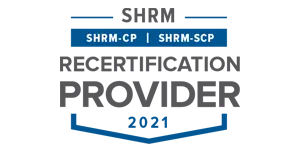A
-
Acceptable Quality Level.
The term acceptable quality level, abbreviated as AQL, is a concept appearing in Six Sigma sampling inspection. The concept describes the maximum percentage of defects that is acceptable for a long-term average. Six Sigma practitioners use AQL to put a cap on allowable defect when inspecting a batch of items. As per the basics of sampling inspection, the batch is either then accepted or rejected based on its suitability.
-
Accuracy.
When we talk about accuracy, it is usually as a term of measurement. Accuracy describes the difference in average or means of numerical readings, as well as the true / target value. It is essentially the same as bias when used for measurement. The difference between observed measurements and the true value, based on the reference standard. Any Six Sigma practitioner or statistician will use accuracy to discover data biases. In process variation, practitioners aim to create accuracy by adjusting the process mean.
-
Activity Network Diagrams.
ANDs or activity network diagrams display information about Six Sigma activities and how they are interdependent. ANDs are only ever used in complex projects to help with planning, scheduling, and identifying critical pathways. Critical pathways are activities that would suffer from delay, ultimately impacting project completion. The most commonly used activity network diagram is a project evaluation and review technique, or PERT. In PERT, nodes or circles represent milestones in a project, interlinked by numbered lines to show duration.
-
Analysis of Variance.
Also known as ANOVA, analysis of variance is a statistical technique used by Six Sigma project leaders. You can use ANOVA to compare whether samples are taken from populations with the same mean, or if their population means possess significant differences. ANOVA analyzes variation in data sets to deduce how much variation has contributed to each factor. You should use a hypothesis test to work out how much variation is statistically significant per each source. Once you have proven or disproven your hypothesis, you can use ANOVA, provided each process conforms to normal distribution.
-
Analytical Statistics.
Six Sigma Belts use analytical statistics, sometimes known as inferential statistics, to draw conclusions about populations based on their sample data. For instance, three sets data values, at 4, 8, and 9, might refer to the number of years three homeowners have owned their homes. You would use analytical statistics to make inferences about the mean amount of time your sample participants have owned their homes, which would be 7 Using such a small sample would be impractical, which is why a full-scale study involving a sufficient sample size is necessary. During your study, you would use analytical statistics to ensure your sample is representative of the population.
B
-
Balanced Scorecard.
Six Sigma project leaders use the balanced scorecard strategy to increase performance and accountability when both are lacking. Using balance scorecard, you can develop performance measures based on four categories. Financial, the most common focus for performance. Customer, based on the known needs and potential expectations for future demand. Business processes, how efficient your operations are. Learning and growth, how you cultivate knowledge and expertise in your employees. The balance scorecard system states that practitioners place too much importance on financial measures. As such, short-term focus on the bottom line of expense operations is more critical to success in the long-term.
-
Bayes Theorem.
Bayes Theorem is an important concept in probability theory. It is a statistical method to calculate conditional probabilities. This means that the likelihood of an event occurring is dependent on how probable the event is, along with the accuracy of your measuring instrument. Six Sigma Belts use it in quality improvement projects to probe probabilities. You can also use it in manufacturing environments to detect the probability of errors. When using Bayes Theorem, your probabilities are the probability of a positive result, the prior probability of the problem, the probability of a positive result with the problem and without it, plus the probability of the problem with a good result.
-
Benchmarking.
Benchmarking can be used by any Six Sigma practitioner to strategically improve systems by comparing your current system to an equivalent one. You may wish to compare the system used by a competitor, a company from another industry, or between divisions in your organization. Benchmarking improves critical systems that are not the primary focus of the company. For example, a manufacturing industry may wish to use benchmarking to enhance its distribution system.
-
Box and Whisker Plots.
Six Sigma practitioners use box and whisker plots to display small data sets, depending on their relevance to the project. You can create a box and whisker plot by plotting your first and third quartile onto a graph, with each quartile represented by the width sides of a rectangle. The length sides represent your interquartile range, while a vertical line through the middle represents your median. The whiskers are horizontal lines that extend to the largest and smallest data values, but only those that are not outliers. Your outliers are plotted using an asterisk. Outliers are usually more than 1.5 times the interquartile range above your third quartile, but below the first. You can use box and whisker plots in process improvement projects.
C
-
Calibration Standard.
Your calibration standard should be used in measurement systems to calibrate your measuring devices for Six Sigma projects. Calibration standard refers to a point of known accuracy that you can trace according to the national standard. In the US, the National Institute of Standards and Technology provides the standard on which to base your work.
-
Cause and Effect Diagram.
The Cause and Effect diagram is also known as an Ishikawa diagram or a fishbone diagram. Six Sigma Belts use it to represent and categorize information about a problem. The diagram resembles a fish skeleton, with a central line (the spine) representing a problem, usually a production issue. Additional lines branch off the problem line, creating categories for methods, personnel, materials, and equipment. Each additional line then branches off to narrow down the potential causes. You use Cause and Effect diagrams in process improvement and root cause analysis to determine the source of an issue. Once you have found the cause, you can correct the issue and put preventative measures into place.
-
Central Limit Theorem.
Six Sigma project leaders use CLT, or central limit theorem, in statistical process control. CLT relies on how well data conforms to normal distribution, stating how even if a process is non-conforming, the sample means taken will still be normal. In other words, the larger the sample you work with, the greater the tendency for conformity. You use CLT by taking many samples and calculating the means of each one. When represented in a graph, the data should display a different shape for each population formed by each sample mean.









No responses / comments so far.